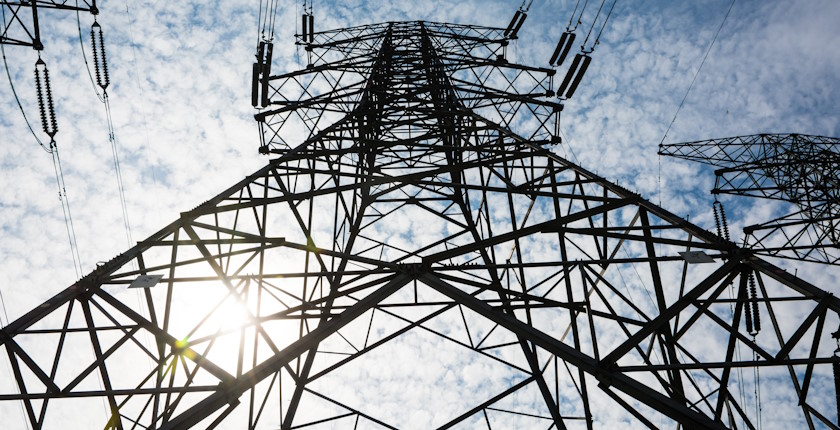
Photo: Evening_tao on Freepik
The International Energy Agency forecasted a sharp increase in global electricity demand until the end of 2027. It sees more moderate acceleration rates in Europe. Turkey accounted for 25% of the increase in 2024, the Electricity 2025 report reveals. According to the new estimate, renewable energy sources will cover 95% of the demand increase in the three-year period.
Growth in global electricity demand is set to accelerate in the coming years as power-hungry sectors expand, IEA said in its annual report Electricity 2025. Electrification of buildings, transportation and industry combined with a growing demand for air conditioners and data centers is ushering a shift toward a global economy with electricity at its foundations, the organization’s experts pointed out.
The increase in electricity consumption through 2027 is expected to average 4% annually, compared to last year’s 4.3%. The growth in global demand would be the equivalent of adding an amount greater than Japan’s annual electricity consumption every year in the three-year period.
Production of solar panels, batteries, EVs fueling China’s hunger for electricity
Most of the additional demand over the next three years is seen in emerging and developing economies, which account for 85%. The trend is most pronounced in China, where electricity demand has been growing faster than the overall economy since 2020. China’s electricity consumption rose by 7% in 2024 and is expected to grow by an average of around 6% through 2027.
The demand growth in China has been fuelled in part by the industrial sector, where alongside the traditional energy-intensive sectors, the rapidly expanding electricity-intensive manufacturing of solar panels, batteries, electric vehicles and associated materials played a significant role.
“The acceleration of global electricity demand highlights the significant changes taking place in energy systems around the world and the approach of a new Age of Electricity. But it also presents evolving challenges for governments in ensuring secure, affordable and sustainable electricity supply,” said the IEA’s Director of Energy Markets and Security Keisuke Sadamori.
Electricity demand in the EU isn’t expected to rebound to 2021 level before 2027
In the United States, a strong increase in electricity demand is expected to add the equivalent of California’s current power consumption to the national total over the next three years. Electricity demand growth is forecast to be more modest in the European Union, with demand rising back to its 2021 levels only by 2027.
EU electricity consumption declined by 3% in 2022 and again in 2023, taking it down to levels last seen two decades ago. The modest growth of 1.4% in 2024 was supported by the residential and commercial sectors, led by increased use of heat pumps and electric vehicles and higher demand from data centers. By contrast, industrial electricity consumption remained relatively flat, having fallen by around 6% in both 2022 and 2023.
Renewable energy to overtake coal in power production this year
The new report forecasts that growth in low-emissions sources – primarily renewables and nuclear – is sufficient, in aggregate, to cover all the growth in global electricity demand over the next three years. In particular, generation from photovoltaics is forecast to meet roughly half of global electricity demand growth through 2027, supported by continued cost reductions and policy support.
Carbon dioxide emissions from global electricity generation are expected to plateau
Renewables – such as solar, wind and hydropower – are set to meet about 95% of the electricity demand growth in the forecast period. In 2025, they provide more than one third of total electricity generation globally, overtaking coal.
Solar power output surpassed coal in the EU in 2024, with solar’s share of the power mix exceeding 10%. China, the United States and India are all expected to see the share of photovoltaics in annual electricity generation reach 10%.
At the same time, nuclear power is making a strong comeback, with its electricity generation on course to hit new highs every year. Carbon dioxide emissions from global electricity generation are thus expected to plateau after increasing by about 1% in 2024.
Decarbonization lowers electricity prices but grid tariffs are rallying
While the energy transition is set to reduce the overall cost of generating electricity, grid tariffs are expected to rise due to expanding electrification and further integration of renewables. It stems from the need to raise investments in infrastructure expansions and upgrades to serve growing conventional electricity demand and to accommodate new electricity consumption from EVs and heat pumps, even though the higher costs are shared across a broader end-user base, the authors explained.
Utilities must also invest in grid digitalization, energy storage and smart technologies to manage the grid efficiently. Additionally, the need to maintain grid stability and reliability while phasing out traditional power plants requires substantial investments in flexible resources and grid reinforcement.
Renewables share in Turkey’s electricity mix nearing 50%
As for the region that Balkan Green Energy News covers, the agency provided a snapshot of Turkey in a regional overview. Electricity demand saw a sharp increase of 5.7% in 2024 after a year of relatively flat consumption, with the country accounting for an exceptionally strong 25% of total European demand growth.
It was boosted by cooling as Turkey experienced the hottest summer in 54 years. IEA expects growth to moderate to an average annual rate of 2.4% over the 2025-2027 outlook period. Total renewables production is set to reach a 50% share of the electricity mix by 2027.









Be the first one to comment on this article.